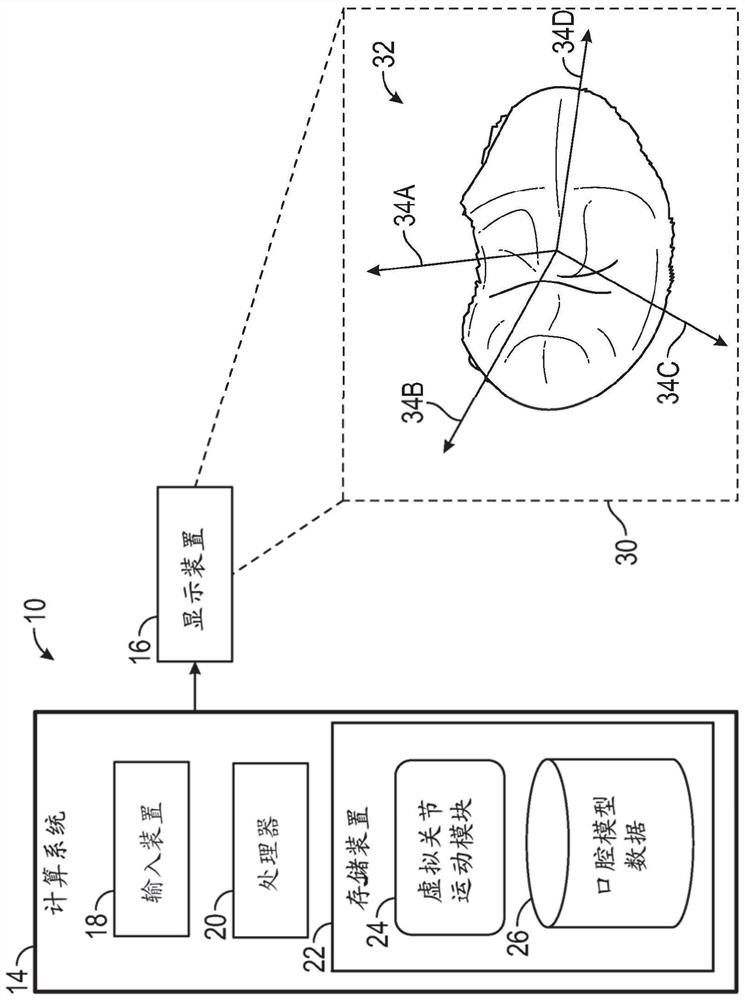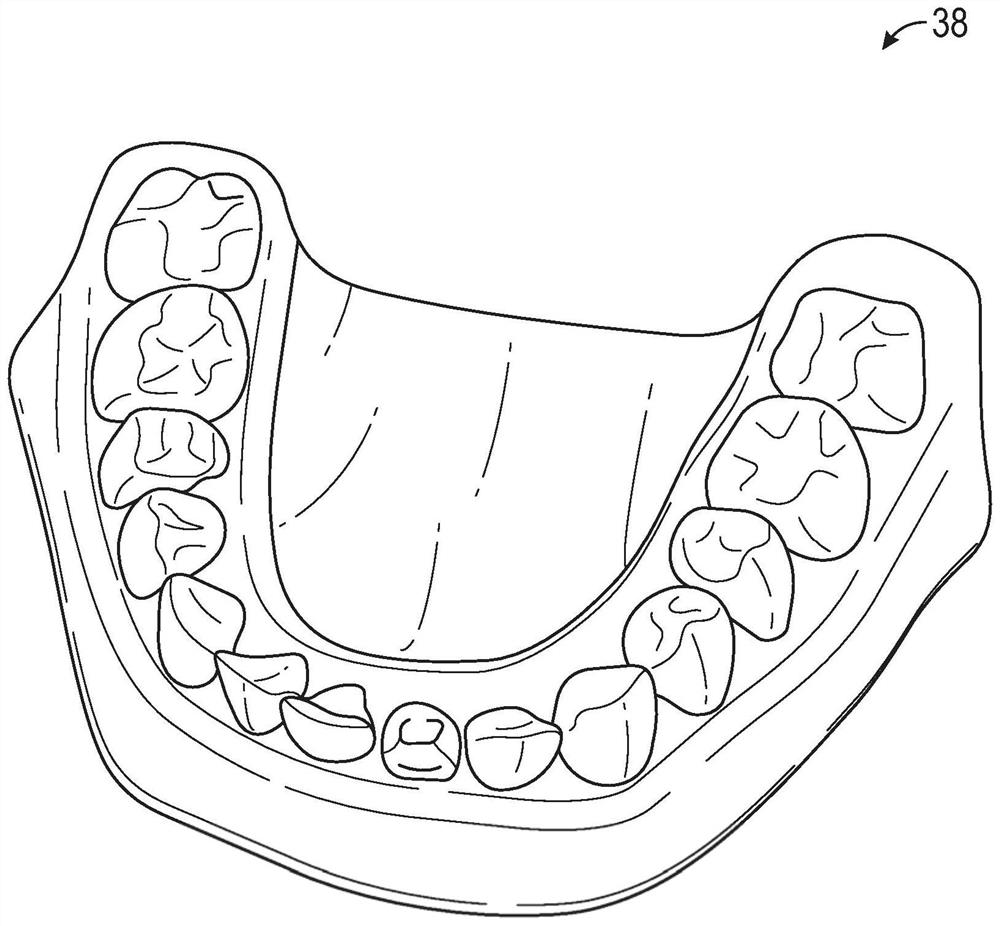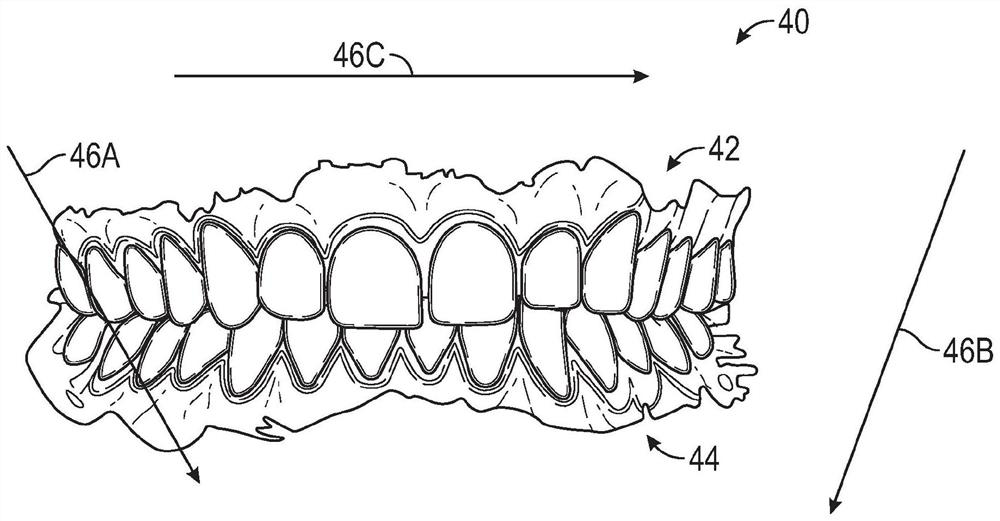Virtual joint motion model for dental processing
A movement direction, tooth technology, applied in the field of dental treatment planning, can solve problems such as difficult to see and identify tooth contact points, impossible to view, difficult to measure distance, angle, orientation, area and change over time, etc.
- Summary
- Abstract
- Description
- Claims
- Application Information
AI Technical Summary
Problems solved by technology
Method used
Image
Examples
Embodiment Construction
[0030] figure 1 is a diagram of an example system 10 for performing virtual articulation and determining whether a patient's teeth are properly positioned, oriented or formed. System 10 includes computing system 14 . Computing system 14 may include a desktop computer, laptop computer, tablet computer, or any type of computing device.
[0031] The system 10 may also include an electronic display device 16 for displaying a digital 3D model of the intraoral structure. In some examples, display device 16 is part of computing system 14 , and in other examples, display device 16 may be separate from computing system 14 . Display device 16 may be implemented with any electronic display, such as a cathode ray tube (CRT), liquid crystal display (LCD), light emitting diode (LED) display, or organic light emitting diode (OLED) display.
[0032] System 10 may also include an input device 18 for receiving user commands or other information. In some examples, input device 18 is part of ...
PUM
 Login to View More
Login to View More Abstract
Description
Claims
Application Information
 Login to View More
Login to View More - R&D
- Intellectual Property
- Life Sciences
- Materials
- Tech Scout
- Unparalleled Data Quality
- Higher Quality Content
- 60% Fewer Hallucinations
Browse by: Latest US Patents, China's latest patents, Technical Efficacy Thesaurus, Application Domain, Technology Topic, Popular Technical Reports.
© 2025 PatSnap. All rights reserved.Legal|Privacy policy|Modern Slavery Act Transparency Statement|Sitemap|About US| Contact US: help@patsnap.com



